Land Pollution: Causes, Effects, and Prevention
- August 22, 2024
- 0 comment
Land pollution is a pressing environmental issue that affects ecosystems and human health alike. As we delve into the intricacies of this problem, it’s crucial to understand its root causes, which range from industrial activities to improper waste disposal. The effects of land pollution are profound, leading to soil degradation, water contamination, and loss of biodiversity. However, there’s hope. By exploring proven prevention strategies, we can mitigate these impacts and work towards a cleaner, healthier planet.
What is Land Pollution?
Land pollution refers to the contamination of land surfaces by harmful substances, resulting from human activities. This type of pollution occurs when hazardous materials such as chemicals, plastics, and industrial waste are improperly disposed of or accidentally released into the environment. Common sources include landfills, industrial discharges, and agricultural runoff. These pollutants can seep into the soil, affecting its quality and disrupting the natural balance of ecosystems. According to the Environmental Protection Agency (EPA), improper waste management practices and the accumulation of non-biodegradable materials significantly contribute to land pollution.

The impacts of land pollution are far-reaching and detrimental. Contaminated land can lead to soil erosion, reduce agricultural productivity, and harm plant and animal life. Furthermore, pollutants can leach into groundwater, posing risks to human health by contaminating drinking water supplies. A study published in the Journal of Environmental Management highlights that land pollution not only degrades the environment but also contributes to economic losses due to reduced land usability and increased cleanup costs. Addressing this issue requires comprehensive waste management strategies and sustainable practices to protect both the environment and public health.
The Main Causes of Land Pollution
Industrial Waste
Industrial waste is a major contributor to land pollution, generated from various manufacturing processes and industrial activities. Factories and plants often produce substantial amounts of waste, including hazardous chemicals, heavy metals, and other pollutants. When these byproducts are not managed properly, they can leach into the soil and contaminate the land.
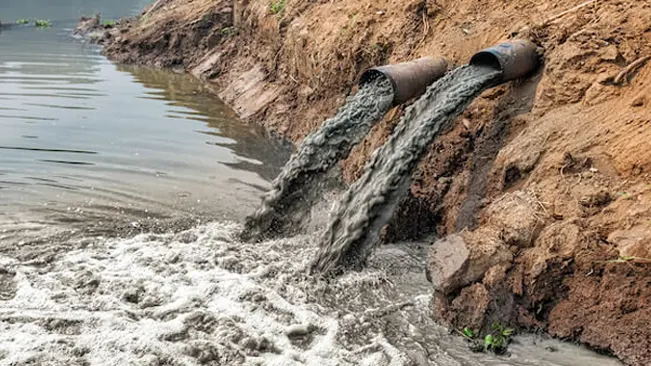
For instance, chemicals like solvents and heavy metals such as lead and mercury can persist in the environment for decades, impacting soil health and biodiversity. The contamination can disrupt local ecosystems by altering soil pH, affecting plant growth, and harming wildlife. Effective waste management and disposal practices are essential to mitigate these impacts and prevent long-term environmental damage.
Agricultural Runoff
Agricultural runoff occurs when fertilizers, pesticides, and other chemicals used in farming are washed away by rain or irrigation, carrying these substances into nearby soil and water sources. This runoff can significantly degrade soil quality over time, as excess nutrients from fertilizers lead to nutrient imbalances and can cause soil degradation.
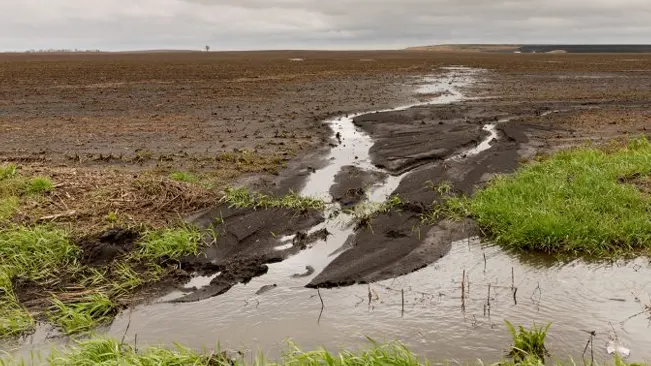
Pesticides can harm beneficial microorganisms in the soil, which are crucial for maintaining soil fertility and structure. Additionally, these chemicals can contaminate surface and groundwater, affecting aquatic life and potentially entering the human food chain. Implementing sustainable agricultural practices, such as precision farming and integrated pest management, can help reduce the negative effects of runoff.
Improper Waste Disposal
Improper waste disposal is a significant factor in land pollution, often resulting from inefficient waste management practices. Illegal dumping of waste and inadequate landfill operations contribute to the accumulation of non-biodegradable materials like plastics and electronics. These materials can take hundreds of years to decompose, during which time they leach harmful substances into the soil.

Inadequate landfill management can lead to leakage of leachate, a toxic liquid that can contaminate groundwater and soil. Additionally, burning waste in open dumps can release toxic fumes and particulate matter into the atmosphere. Proper waste segregation, recycling, and safe disposal methods are crucial for minimizing land pollution and protecting environmental health.
Mining Activities
Mining activities contribute significantly to land pollution through the extraction of minerals and ores from the earth. The process involves removing large volumes of earth, which can result in habitat destruction, soil erosion, and contamination of surrounding areas. Mining operations often release heavy metals, acids, and other pollutants into the environment, either directly from the mining process or through the disposal of mining waste.
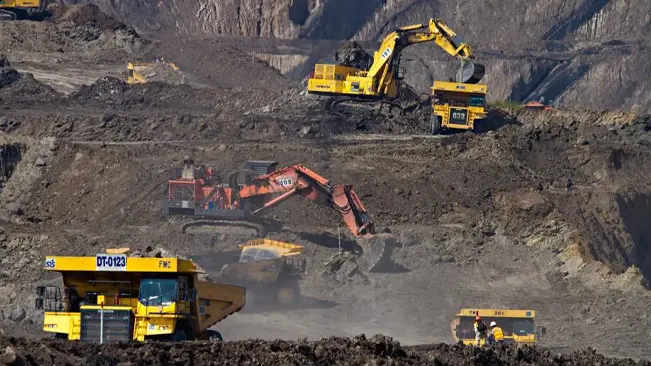
These pollutants can persist in the soil and water, leading to long-term environmental impacts, such as reduced soil fertility and damage to aquatic ecosystems. Implementing better mining practices, such as improved waste management and land rehabilitation, can help mitigate these adverse effects.
Deforestation
Deforestation, the removal of forests for agriculture, urban development, or logging, leads to significant land pollution and environmental degradation. The clearing of land results in soil erosion, as the protective cover of vegetation is removed. Without tree roots to anchor the soil, it becomes more susceptible to erosion by wind and water.

Additionally, deforestation can reduce the land’s ability to absorb and filter pollutants, leading to increased runoff and soil contamination. The loss of forests also impacts local biodiversity, as many plant and animal species depend on these habitats. Promoting sustainable land use practices and reforestation efforts can help mitigate the impacts of deforestation and restore land health.
Effects of Land Pollution
Soil Degradation
Land pollution profoundly impacts soil health, resulting in its degradation. When pollutants such as heavy metals, industrial chemicals, and non-biodegradable materials accumulate in the soil, they can alter its physical and chemical properties. For instance, heavy metals like lead, cadmium, and arsenic can accumulate in the soil, affecting its pH levels and reducing its fertility. Chemical pollutants can disrupt soil structure, making it less porous and more compacted, which impairs root growth and water infiltration.

As a result, soil becomes less capable of supporting plant life, leading to reduced agricultural productivity. This decline in soil quality affects crop yields, potentially leading to food shortages and economic losses for farmers. Over time, continuous pollution can render soil barren and unproductive, posing long-term challenges for sustainable agriculture and land use.
Water Contamination
Land pollution has a direct impact on water sources through the leaching of pollutants into groundwater and the runoff of contaminants into surface water bodies. Pollutants such as heavy metals, pesticides, and industrial chemicals can infiltrate groundwater systems, contaminating drinking water supplies and posing serious health risks. Heavy metals like mercury and lead can accumulate in the human body, leading to severe health issues, including kidney damage, neurological disorders, and cancer. Pesticides can disrupt hormonal systems and contribute to developmental and reproductive problems.
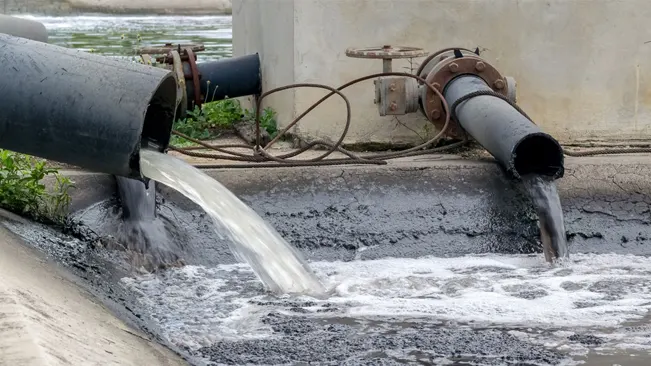
In addition to health risks, polluted water can adversely affect aquatic ecosystems. Contaminants can harm fish, invertebrates, and plant life, leading to decreased biodiversity and disrupted food chains. The death of aquatic organisms and the disruption of ecosystems can have cascading effects, impacting not just aquatic life but also the animals and humans that depend on these water sources.
Impact on Wildlife
Pollutants in the environment can have severe effects on wildlife, particularly when they enter the food chain. Animals that come into contact with contaminated soil or water can suffer from a range of health issues, including poisoning, reproductive problems, and death. For instance, heavy metals and toxic chemicals can impair the health and reproductive capabilities of wildlife, leading to population declines.

Pollutants can also disrupt food chains; when plants or insects contaminated with toxins are consumed by larger animals, the toxins can accumulate and magnify through bioaccumulation. This process can lead to elevated toxin levels in apex predators, affecting their health and survival. The overall impact can lead to reduced biodiversity, as sensitive species may decline or become extinct, and ecosystems may become unbalanced, disrupting natural processes and interactions.
Human Health Risks
Land pollution poses significant health risks to humans, both directly and indirectly. Exposure to hazardous substances such as heavy metals, chemicals, and other pollutants can lead to a variety of health problems. For example, inhaling dust or particles contaminated with heavy metals can cause respiratory issues, while exposure to chemical pollutants can contribute to cardiovascular diseases and cancers. Contaminated soil and water can also serve as breeding grounds for pathogens, leading to the spread of infectious diseases.

Polluted environments may harbor bacteria, viruses, and parasites that can cause gastrointestinal illnesses, respiratory infections, and other health problems. Additionally, consuming food products grown in contaminated soil can lead to long-term health effects, as toxins accumulate in the body over time. The broad spectrum of health risks highlights the urgent need for effective pollution control measures to protect public health.
Economic Costs
The economic costs associated with land pollution are substantial and multifaceted. Cleaning up polluted sites involves significant financial investment in remediation and restoration efforts. This process can include removing contaminated soil, treating polluted groundwater, and rehabilitating affected areas. The economic burden extends beyond cleanup costs; land pollution can also result in decreased agricultural productivity, which impacts food supply and livelihoods for farmers.
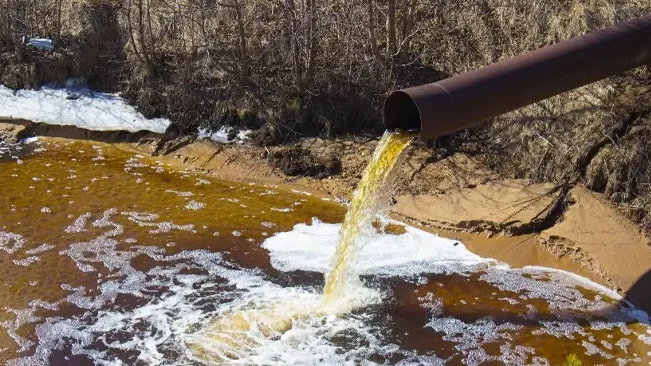
Additionally, damage to natural resources and ecosystems can have economic repercussions for industries reliant on healthy environments, such as tourism and fisheries. The financial strain of managing and mitigating land pollution can affect both public and private sectors, leading to increased expenditures and potential economic instability. Investing in pollution prevention and sustainable practices can help reduce these economic costs and promote long-term environmental and economic health.
Climate Change
Land pollution can contribute to climate change by disrupting natural processes that regulate greenhouse gases. Deforestation, for example, reduces the land’s capacity to sequester carbon dioxide (CO2), a major greenhouse gas. Trees and vegetation act as carbon sinks, absorbing CO2 from the atmosphere and mitigating the effects of global warming. When forests are cleared for agriculture or development, this carbon sequestration capacity is lost, and the stored carbon is released back into the atmosphere.
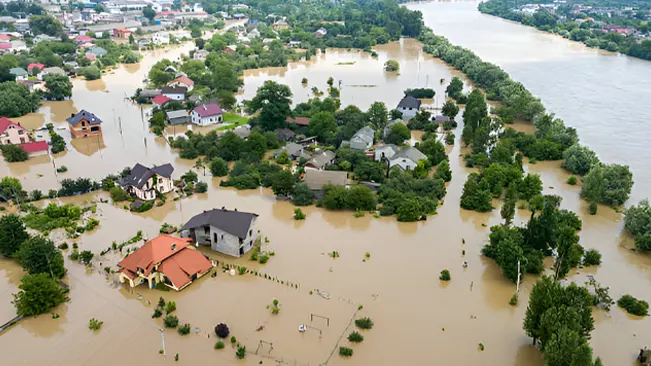
Additionally, soil degradation resulting from pollution reduces the soil’s ability to store carbon, further contributing to increased atmospheric CO2 levels. The loss of vegetation and healthy soils exacerbates the greenhouse effect, leading to higher global temperatures and contributing to climate change. Addressing land pollution through reforestation, sustainable land management, and pollution control can help mitigate these climate impacts and support climate change adaptation efforts.
How to Prevent Land Pollution
Sustainable Agricultural Practices
The use of pesticides and synthetic chemicals in agriculture significantly contributes to land pollution. To mitigate this impact, farmers can adopt sustainable practices such as using organic fertilizers like manure instead of chemical bio-fertilizers. Participating in educational programs focused on sustainable farming techniques can further help farmers reduce their environmental footprint.
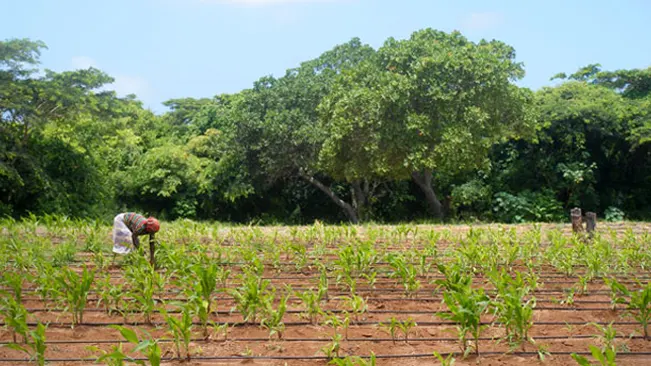
On a personal level, supporting local, environmentally-conscious farmers by purchasing their products at farmer’s markets or local grocery stores helps promote sustainable agriculture. Additionally, contributing to or volunteering in community urban gardens can foster environmentally friendly farming practices and support local food systems.
Reforestation
Reforestation involves replanting trees in areas that have been deforested or damaged by wildfires. This practice is essential for soil conservation as it helps to bind the soil, preventing erosion and reducing the risk of flooding.
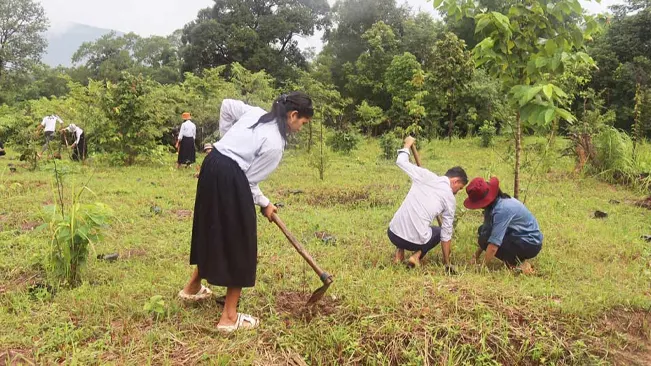
By restoring forested areas, reforestation also enhances land stability and improves local ecosystems. Effective reforestation efforts contribute to the health of the environment by mitigating soil pollution, preserving biodiversity, and supporting the natural water cycle.
Solid Waste Treatments
Improper treatment of solid waste can lead to the accumulation of hazardous substances in the soil. Chemical treatment methods, such as neutralization, are used to manage waste more effectively.
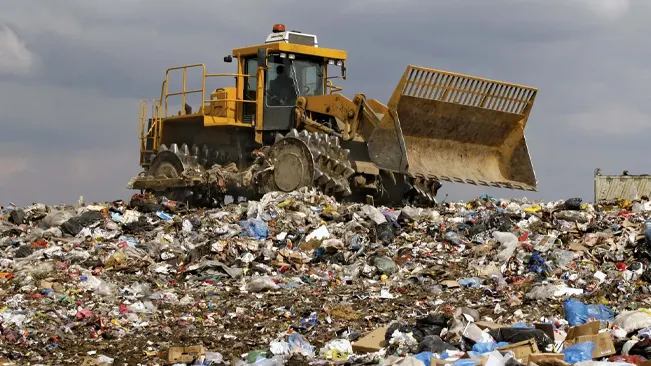
Neutralization involves adjusting the pH levels of waste materials to make them less harmful before they are disposed of in landfills. This controlled approach helps reduce the potential for soil contamination and minimizes the environmental impact of waste materials.
Reduce, Reuse, and Recycle
Reducing personal contributions to land pollution can be achieved through simple actions like reusing and recycling items. Reusing materials prevents waste from being created in the first place, while recycling helps to divert usable materials from landfills.

With increased awareness and more recycling programs available, it is easier than ever to participate in these practices. By making a conscious effort to reduce waste, individuals contribute to lessening the overall burden on landfills and minimizing environmental harm.
Composting
Composting is an effective way to reduce land pollution by converting food scraps and yard waste into valuable organic matter. According to the United States Environmental Protection Agency, more than 30% of household waste consists of compostable materials.

By composting these items instead of sending them to landfills, individuals can reduce the amount of waste that contributes to soil pollution. Composting not only helps in managing waste but also enriches soil, supports plant growth, and preserves environmental health.
Conclusion
Land pollution poses serious threats to ecosystems, wildlife, and human health through soil degradation, water contamination, and habitat disruption. Tackling this issue requires a combination of better waste management, sustainable farming, and effective regulation. By supporting practices like reforestation, proper waste treatment, recycling, and composting, we can reduce land pollution and protect our environment for future generations.
FAQs
- What is land pollution?
Land pollution refers to the contamination and degradation of the land surface due to human activities. It occurs when pollutants such as chemicals, waste, and hazardous materials accumulate in the soil, leading to environmental damage and reduced land productivity. - What are the main causes of land pollution?
The primary causes of land pollution include industrial waste, agricultural runoff, improper waste disposal, mining activities, and deforestation. These activities introduce harmful substances into the soil, affecting its quality and the surrounding environment. - How does land pollution affect the environment?
Land pollution degrades soil quality, which can lead to reduced agricultural productivity and increased soil erosion. It also contaminates water sources through runoff, harming aquatic ecosystems and wildlife. Additionally, it disrupts natural habitats and contributes to broader environmental issues like climate change. - What are the health risks associated with land pollution?
Exposure to pollutants from land pollution can cause a range of health problems, including respiratory issues, cardiovascular diseases, and cancers. Contaminated soil and water can also lead to the spread of infectious diseases and other health concerns. - How can we prevent land pollution?
Preventing land pollution involves several strategies, including improved waste management practices (like recycling and composting), adopting sustainable agricultural techniques, enforcing environmental regulations, and supporting reforestation and soil conservation efforts. - What role does recycling play in reducing land pollution?
Recycling helps reduce land pollution by diverting waste from landfills, where it can contribute to soil contamination. By recycling materials, we decrease the demand for new resources and reduce the volume of waste that accumulates in landfills. - How does composting help with land pollution?
Composting reduces land pollution by converting organic waste, such as food scraps and yard trimmings, into nutrient-rich compost. This process reduces the amount of waste sent to landfills and enriches the soil, promoting healthier land and reducing pollution. - What is reforestation, and how does it combat land pollution?
Reforestation involves planting trees in areas where forests have been cleared or damaged. It helps combat land pollution by stabilizing the soil, preventing erosion, and restoring natural habitats. Reforestation also contributes to carbon sequestration, mitigating climate change impacts. - What can individuals do to help reduce land pollution?
Individuals can help reduce land pollution by practicing recycling and composting, supporting sustainable products and local farmers, volunteering in community gardens, and advocating for better waste management and environmental policies. - Why is it important to address land pollution now?
Addressing land pollution is crucial for protecting soil health, ensuring clean water sources, preserving biodiversity, and safeguarding human health. Immediate action helps prevent further environmental degradation and promotes a sustainable future for all.

Joel Cunningham
Forestry AuthorI'm Joel Cunningham, an expert in pruning and weed management with over a decade of experience. My skills are rooted in formal training and extensive practice, focusing on advanced pruning techniques and efficient weed control. I'm known for my quality work, precision, and deep understanding of plant health and soil dynamics. My contributions extend to educational initiatives where I share sustainable practices and advice, establishing myself as a reliable and authoritative figure in the gardening community.


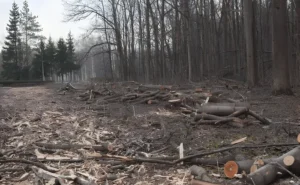










Leave your comment